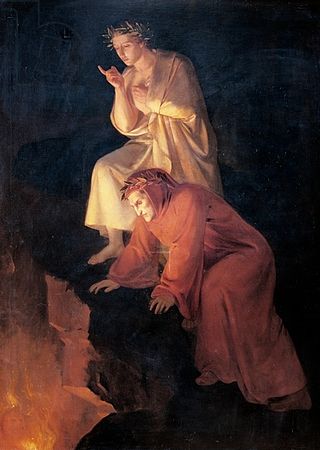
(Wikimedia Commons public domain image)
In the ninth century, translation from Greek into Arabic developed rapidly. Since possibly the middle of the eighth century there had been periodic translations, but the ninth century saw the establishment of a systematic, organized effort. The caliph al-Ma’mun, son of Harun al-Rashid, founded a translation bureau called the Dar al-Hikma (“House of Wisdom”), over which presided a Nestorian Christian named Hunayn ibn Ishaq.[1] (Hunayn’s son eventually succeeded him in the leadership of the institution.) The Nestorians were useful because they had a foot in both cultures. At the time of the Arab conquests, their native language was Syriac, a dialect of Aramaic. As we have seen, this made it easier for them to understand Arabic. But they were also oriented toward the West, the original homeland of their doctrine, and their most important writings were in Greek. Nestorian intellectuals, therefore, had typically mastered Greek, Syriac, and Arabic, and were perfectly equipped to serve as human bridges over whom the culture of the ancient classical world could enter into the new Arab empire.
However, it was not only Nestorian Christians who worked in the House of Wisdom. The bureau of translation was truly ecumenical and was staffed by Christians, Muslims, and Jews. Such collaboration between the various religious groups continued and was in fact of the greatest importance for the whole enterprise. Thus, for instance, the foremost student of al-Farabi (d. 950 A.D.), one of the greatest of the Arab philosophers, was a Christian. And Moses Maimonides (in Arabic, Musa ibn Maymun; d. 1204), the greatest rabbi and Jewish philosopher of the Middle Ages, served as a court physician in Cairo, where he read and pondered the works of earlier Arab Muslim thinkers and wrote his philosophical books in Arabic.[2]
Later, when Arabic philosophy—for several reasons—had lost its own creative spark, it helped to kindle a philosophical flame in western Europe. In this process, the Jews of Spain played a role very much like that played by the Nestorian Christians in the East. Like the Nestorians, the Jews had a foot in both worlds. Their own language was Hebrew, which was close enough to Arabic that they had little problem mastering that language. Yet they were also familiar with Latin. Consequently, they served as the middlemen, the transmitters of Arabic philosophical texts to the West.
And it was a rich body of texts that was transmitted. Besides al-Farabi, there was the great Ibn Sina (d. 1037), who became famous in the West under the name “Avicenna,” a Latin distortion of a Hebrew corruption of his original Arabic name. There was also Ibn Rushd, who, through a process similar to that of Avicenna, became Averroes in the West.[3] He was the author of the most famous commentaries on Aristotle to come out of the Middle Ages. It is an impressive tribute to these men that Dante Alighieri (d. 1321), in his brilliant Divine Comedy, placed them in the highest circle of hell. (That was the best that a devout medieval Catholic like Dante could do for non-Christians, given the religious beliefs of his day.) According to that long and famous poem, while Dante is being given a tour of hell in Canto IV of the Inferno, Virgil, the classical Roman poet who was his guide, points out many of the more famous inhabitants. In the first circle, the mildest place in the infernal realm, were many of the great heroes of the past, whose major sin was that they had not been able to receive Christianity. Among these unfortunates, obviously deeply admired by Dante, were such heroic figures of classical history and literature as Hector, Aeneas, and Caesar. But he also included among them philosophers, such as Socrates, Plato, Cicero, Seneca, and “the master of the men who know,” Aristotle. Great pagan scientists, including “Euclid the geometer,” Ptolemy, Hippocrates, and Galen, make their appearance. But there too, in the best part of Dante’s Inferno, despite all the enmity that divided their civilization from his, were Avicenna and “Averroes, of the Great Commentary.” These illustrious individuals were in hell only because they lacked the ordinance of baptism. (It is one of the greatest features of the true gospel that such injustice is banished by the ordinances of the temple.) Virgil, Dante’s guide through hell, explained the situation to him.
The kindly master said: “Do you not ask
who are these spirits whom you see before you? I’d have you know, before you go ahead,
they did not sin; and yet, though they have merits, that’s not enough, because they lacked baptism, the portal of the faith…
and of such spirits I myself am one.
For these defects, and for no other evil,
we now are lost and punished just with this: we have no hope and yet we live in longing.”[4]
Thomas Aquinas (d. 1274), the “Angelic Doctor,” was, until perhaps the last few years, essentially the official theologian of the Roman Catholic Church. He was influenced by the Arab philosophers, especially by Averroes and Avicenna, and placed the latter on a par with Plato. They attracted even the attention of kings: In 1473, King Louis XII of France decreed that Aristotle had to be taught with the commentaries of Averroes. As late as the sixteenth century, the Arab philosophers were required reading (in Latin translation) in the great European universities of Bologna, Padua, Paris, and Oxford.
[1] Al-Ma’mun’s name is pronounced “Ma’MOON.” The common name Ishaq is the Arabic equivalent of Isaac and is pronounced “ISS-hak.”
[2] To be precise, Maimonides wrote in the Arabic language but used the Hebrew alphabet. This is just one of many instances from the ancient and medieval periods of using the script of one language to write in another language. It is something that has been ridiculed in the Book of Mormon, whose writers evidently used a form of Egyptian script to write in Hebrew. But it was not unusual.
[3] Usually pronounced “A-VER-o-eez.”
[4] Dante, Inferno, Canto IV, lines 31-42, in the translation of Allen Mandelbaum.












